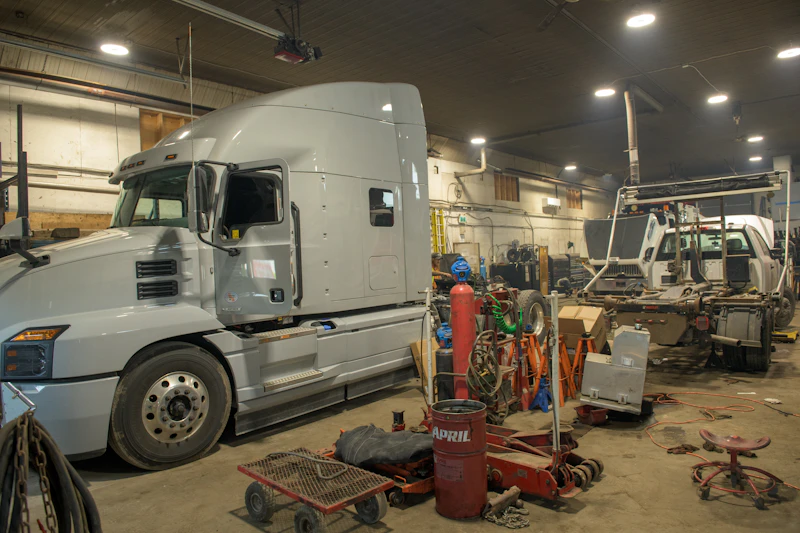5 Fast A/C Fixes to Keep Your Truck Cool This Summer

5 Fast A/C Fixes to Keep Your Truck Cool This Summer
If you’re hauling cross-state or idling through traffic near the ship channel, you need quick, effective fixes when the air goes warm. Avoiding this issue during intense summer heat not only makes your cab uncomfortable but also risks your HVAC system the longer you delay. So, grab a cold drink, roll down the windows if you must, and let’s dive into five fast A/C fixes that’ll keep your rig chill all summer long.
Check and Recharge Low Refrigerant Levels
Let’s kick things off with the usual suspect: low refrigerant. If your truck’s blowing lukewarm air even though the fan is spinning like crazy, your AC system might be starving for R-134a or R-1234yf. Over time, minor leaks can bleed the system dry, especially in older rigs or those clocking high mileage under scorching sun.
But here's the thing, simply "topping it off" won’t cut it if you’ve got an actual leak. You need a shop that:
- Pressure tests the system with UV dye or electronic sniffers
- Identifies and seals leaks at the condenser, evaporator, or line connections
- Recharges with refrigerant to manufacturer spec (not by feel)
Recharging refrigerant can often restore full cooling performance within the same day. If your system is running low, expect performance to return fast—sometimes in minutes—after a proper recharge.
Replace Your Cabin Air Filter
Believe it or not, a $20 cabin air filter can make a world of difference when it comes to airflow. Over time, dust, pollen, and grime build up, especially in the muggy Gulf Coast climate of Pearland. A clogged filter restricts air movement, causing your system to feel underpowered.
Swapping in a new filter usually takes under 10 minutes. Not only does it improve cabin airflow, but it also helps protect your evaporator coil from gunk buildup—preserving cooling efficiency over the long haul.
Symptoms of a clogged filter include:
- Weak airflow even at max fan settings
- A musty or moldy smell coming from the vents
- Increased noise from the blower motor
Clean the Condenser Coil
Your truck’s condenser sits right behind the front grille and plays a critical role in releasing heat from the refrigerant. When that component gets coated in grime, bugs, or road debris, it can’t shed heat properly. The result? Lukewarm air, higher pressure in the system, and stressed-out components.
Here’s how to fix it fast:
- Park the truck and let it cool off: Never work on a hot engine bay.
- Pop the hood and locate the condenser: It’s usually the first radiator-like component behind the grille.
- Use a soft-bristle brush or compressed air: Gently dislodge bugs, leaves, and buildup without bending the fins.
- Apply coil cleaner if needed: Spray on an automotive coil cleaner designed for AC use.
- Rinse with low-pressure water: High pressure can bend fins, so be careful.
Test the Blower Motor and Resistor
So your system is charged, your air filter is clean, and your condenser is spotless, but you’re still not getting enough airflow. Time to look at the blower motor and resistor. The blower motor is what pushes air through your vents, and the resistor controls the speed.
If your motor is fading or your resistor has burned out (especially common in older or high-mileage trucks), you may notice:
- Air only blowing on high or not at all
- Intermittent airflow that seems to have a mind of its own
- Whining or squeaking noises from behind the dash
Testing is straightforward for a pro. Using a multimeter, a tech can check the voltage at the resistor and motor terminals. If either component is faulty, a replacement typically takes under an hour—and your airflow will be back to full blast in no time.
Inspect for Leaks and Pressure Issues
If your truck’s A/C is still struggling to keep up, you may be dealing with leaks or improper system pressure. Catching these issues early can prevent catastrophic compressor failure and expensive downtime. A fast check with gauges and dye can confirm whether your system is leaking or suffering from poor flow. Fixing it might be as simple as swapping an O-ring or replacing a clogged orifice tube.
Here’s what to check:
- Oil stains near AC lines or fittings: A sign that refrigerant is leaking with oil.
- Hissing or bubbling sounds under the hood: Often indicates pressure escaping.
- Sight glass (if equipped) shows bubbles: Air or low refrigerant in the system.
- High-side pressure readings too low or too high: Signals restrictions or improper charge levels.
- Low-side pressure that’s too low: Points to undercharging or blockages.
Book Fast A/C Fixes Near You
Beating the Texas heat isn’t just about blasting the fan and praying for the best. These five fast A/C fixes—checking refrigerant levels, replacing cabin filters, cleaning the condenser, testing blower components, and inspecting for leaks—can keep your truck’s AC running cold and steady even when the road feels like a skillet.
At Saviors Repair in Pearland, we believe in smart, efficient diagnostics and repairs that get you back on the road without missing a beat. Don’t sweat your A/C problems—fix them fast, and keep that cold air flowing. For more information about heavy-duty truck repairs, read our article about 5 common brake maintenance mistakes.


.webp)
.webp)